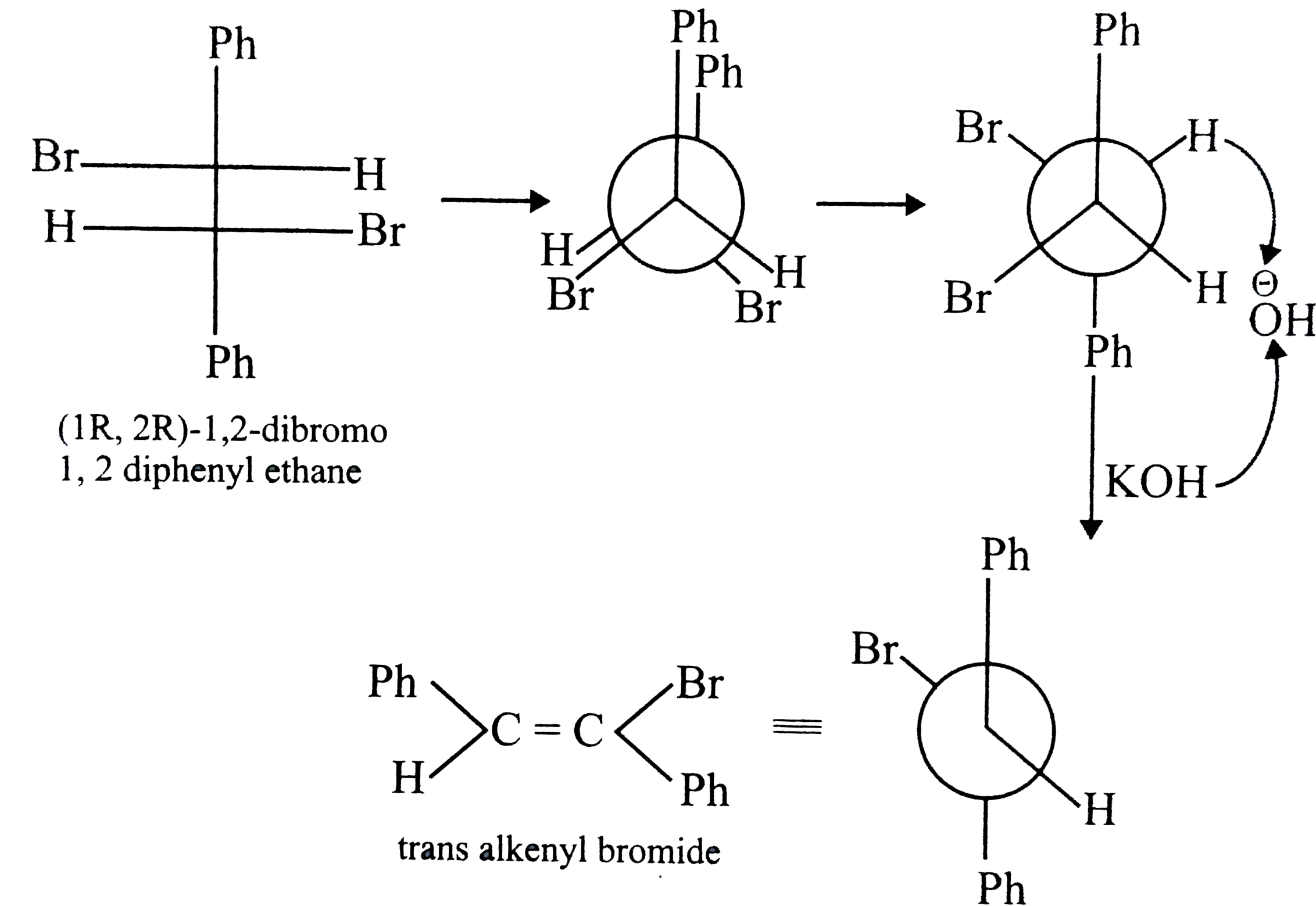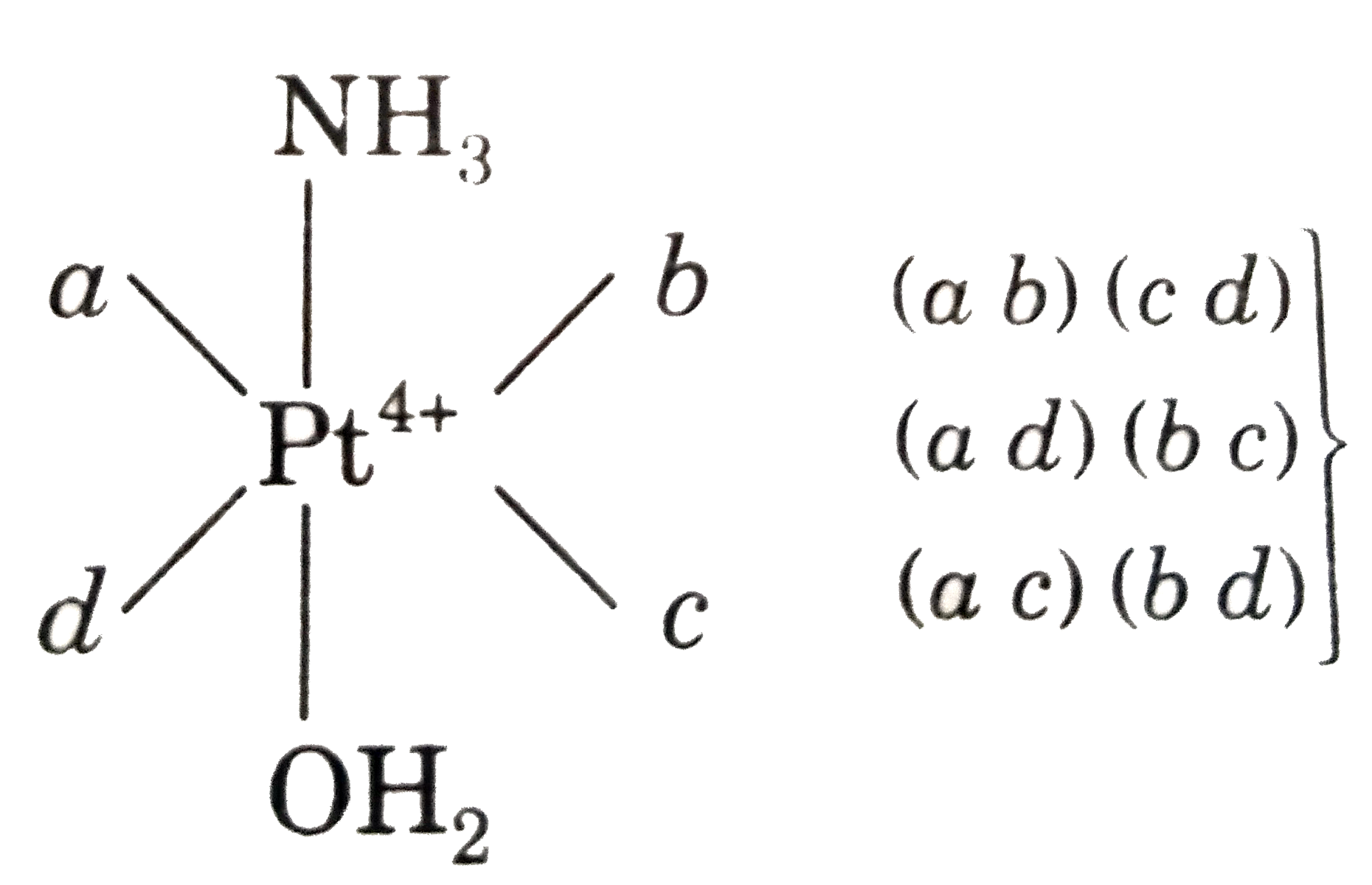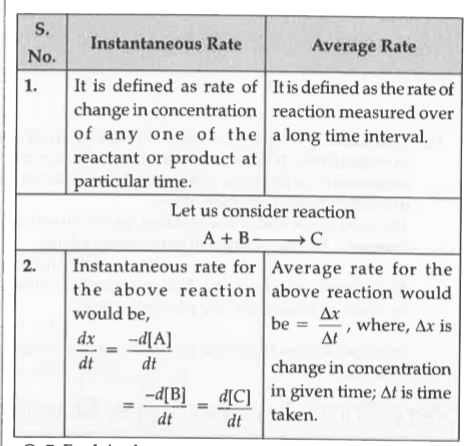InterviewSolution
This section includes InterviewSolutions, each offering curated multiple-choice questions to sharpen your knowledge and support exam preparation. Choose a topic below to get started.
| 4751. |
triangleH for CaCO_3(s)rarrCaO(s)+CO_2(g) is 176 kJ mol^-1at 1240 K. The triangleUfor the change is equal to: |
|
Answer» 160 kJ |
|
| 4752. |
When (1R,2R)-1 2-Dibromo-1,2-diphenyl ethane is treated withalcoholic solution of KOH thev most probable product would be . |
|
Answer» TRANS-1,2diphenylethene  . .
|
|
| 4753. |
Write four allotropic forms of sulphur. |
|
Answer» SOLUTION :The ALLOTROPIC forms of SULPHUR: (i) Rhombic sulphur (ii) MONOCLINIC sulphur (iii) Colloidal sulphur (iv) MILK of sulphur. |
|
| 4754. |
What type of bonding helps in stabilising the a-helix structure of proteins? |
| Answer» Solution :The `ALPHA` -helix structure of proteins is stabilised by INTRAMOLECULAR H-bonding between C-O of ONE AMINO acid RESIDUE and the N -H of the fourth amino acid residue in the chain. | |
| 4755. |
Which of the followig mixtures of ions in solubiotn can be separted by using dilute H_(2)SO_(4)? |
|
Answer» `Zn^(2+) and PB^(2+)` |
|
| 4756. |
The voltage of the cell Pb(s)|PbSO_(4)(s)|NaHSO_(4)(0.600M)||Pb^(2+)(2.50 xx 10^(-5)M)|Pb(s) is E = +0.061V. Calculate K_(2) = [H^(+)] [SO_(4)^(2-)]//[HSO_(4)^(-)] the dissociation constant for HSO_(4)^(-). Given Pb(s) +SO_(4)^(2-) rarr PbSO_(4) +2e^(-) (E^(@) = 0.356V),E^(@) (Pb^(2+)//Pb) =- 0.126V. |
|
Answer» |
|
| 4757. |
Which of the following is fluoroapatite |
|
Answer» `CaF_23Ca_(3)(PO_(4))_(2)` |
|
| 4758. |
Write the main structural difference between RNA and DNA of the fourbases, name those which are common to both RNA and DNA. |
|
Answer» Solution :DNA has double HELIX WHEREAS RNA has SINGLE helix. The common bases are Adenine, Guanine and CYTOSINE. |
|
| 4759. |
The specific heat of a bivalent metal is 0.16. the approximate equivalent mass of the metal will be: |
|
Answer» 40 |
|
| 4760. |
Which of the following give (s) Schiff's base with aldehydes ? |
|
Answer» `CH_(3)-CH_(2)-NH_(2)` |
|
| 4761. |
Which reagent will quantitatively distinguish between butyne-1 and butyne-2? |
|
Answer» `Br_2` |
|
| 4762. |
What happens when some ethyl alcohol is added in the Nelson's cell and the cell is closed ? |
|
Answer» SOLUTION :The main products in the Nelson .s cell are chlorine and CAUSTIC soda .Ethyl alcohol is first oxidised with chlorine to acetaldehyde and then to chloral . Chloral on BASE hydrolysis GIVES chloroform. `C_(2)H_(5)OH+4Cl_(2)TOC Cl_(3)CHO+5HCl` `C C_(3)CHO+NaOHtoHCOONa_CHCl_(3)` |
|
| 4763. |
What product is formed when H_2S gasis passed through acidified KMnO_4 solution ? |
|
Answer» S |
|
| 4764. |
Which of the following involves redox reaction? |
|
Answer» Decomposition of `CaCO_(3)` |
|
| 4765. |
Which one of the statements given below concerning properties of solutions describes a colligative effect ? |
|
Answer» Boiling POINT of PURE water increases by the addition of common salt |
|
| 4766. |
Which among the following is most reactive to give nucleophilic addition? |
|
Answer» `FCH_(2)CHO` |
|
| 4767. |
The structure and hybridisation of Si(CH_3)_4 is: |
|
Answer» BENT, sp |
|
| 4768. |
Vapour pressure of pure liquids P and Q are 700 and 450 mm Hg respectively at 330K. What is the composition of the liquid mixture at 330 K, if the total vapour pressure is 600 mm Hg? |
|
Answer» Solution :Vapour PRESSURE of the mixture = 600 mm HG = 700 X mole fraction of P + 450 x mole fraction of Q = (700 x X) + 450(1-X) Mole fraction of component liquid, P = X = 0.6 Mole fraction of component liquid, Q=1-X=0.4 |
|
| 4769. |
When fluoride is heated with conc. H_2 SO_4 and MnO_2 the gas evolved is |
|
Answer» `F_(2)` |
|
| 4770. |
Which of the following correctly ranks the aryl halides in increasing order of reactivity towards sodium methoxide in methanol? |
|
Answer»
|
|
| 4771. |
The reduction of an oxide by aluminium is called |
|
Answer» Beeyer's process |
|
| 4772. |
Which of the following solution (s) is/are correct |
|
Answer» In contains weak acid and its conjugate BASE (b) Basic buffer contains weak base and its conjugate acid. (c) Is wrong because it does not show change in pH on adding small amount of acid or base. (d) Is wrong, all of the above statements are not correct. |
|
| 4773. |
The resistance of a conductivity cell containing 0.001 M KCl solution at 298 K is 1500 Omega.What is the cell constant if conductivity of 0.001 M KCl solution at 298 K is 0.146 xx 10^(-3) S cm^(-1) ? |
|
Answer» SOLUTION :Cell constant =` ("Conductivity")/("CONDUCTANCE") = " Conductivity " xx"Resistance"` `=0.146 xx 10^(-3) S cm^(-1) xx 1500 OMEGA` `=0.129 cm^(-1)` |
|
| 4774. |
Which reagent is used to remove SO_(4)^(2-) or CI^(Theta) from water |
|
Answer» `NaOH` |
|
| 4775. |
Which of the following cyano complexes would exhibit the lowest value of paramagnetic behaviour? [At. Nos. Cr = 24, Mn= 25, Fe = 26, Co=27] |
|
Answer» `[Cr(CN)_(6)]^(3-)` Co(III) : `3d^(6) or t_(2g)^(6)` Sinceit contains no unpaired ELECTRON, it is DIAMAGNETIC or least paramagnetic. |
|
| 4776. |
wedge^(@)""_(m(HAc)) is equal to …………… |
|
Answer» `wedge_(m(AcH))^(@)+wedge_(m(KAC))^(@)+wedge_(m(NAAC))^(@)` |
|
| 4777. |
Write the IUPAC names of the following alcohols from their bond line notations. |
Answer» SOLUTION :
|
|
| 4778. |
When kept in water, raisin swells in size. Name and explain the phenomenon involved with the help of a diagram. Givethree application of the phenomenon. |
Answer» Solution :The WALLS of raisin (partically dried grapes) conssist of semipermeable membrane. When kept in WATER, they swell as concentration INSIDE raisin is HIGH. The phenomenon is called 'osmosis'. 
|
|
| 4779. |
Write the IUPAC names of the following complexes (i) [Co(NH_(3))_(5)CN][Co(NH_(3))(CN)_(5)] (ii) [Pt(Py)_(4)][PtCl_(4)] (iii) [Co(NH_(3))_(4)Cl_(2)]_(3)[Cr(CN)_(6)] |
|
Answer» SOLUTION :`(i) [Co(NH_(3))_(5)CN][Co(NH_(3))(CN)_(5)]` Penta ammine cyanido `-KC ` Cobalt (III) ammine penta cyanido - `KC` Cobaltate (III) `(ii) [Pt(Py)_(4)][PtCl_(4)]` TETRA pyridine plantinum (II) tetrachlorido platinate (II) `(iii) [Co(NH_(3))_(4)Cl_(2)]_(3)[Cr(CN)_(6)]` Tetraammine dichlorido cobalt (III) hexacyanido KC chromate (III) |
|
| 4780. |
Total number of optically active isomers in [Pt(NH_(3))(H_(2)O)BrClIPy]^(+) when NH_(3)" and "H_(2)O are in trans position (opposite to each other) |
Answer» 
|
|
| 4781. |
When benzene diazonium chloride is treated with cuprous chloride and HCl the product formed is : |
|
Answer» Chlorobenzene |
|
| 4782. |
The suitable for strong acid and weak base is |
|
Answer» Methyl orange |
|
| 4783. |
Three atoms A, B and C crystallize in a cubic solid lattice where A atoms are present at the body centre, B atoms are present at the edge centre as well as at the corners of the cube and C atoms are present at the face centres of the cube. Now if all the atoms are removed from the two 4-fold axis and the one 2-fold axis passing through the cube, then the formula of the compound is |
|
Answer» `B_7 C_2` |
|
| 4784. |
Which elements of group 15 are metalloids ? |
|
Answer» N |
|
| 4786. |
Which of the following is not used as a pigment in paints ? |
|
Answer» lead dioxide |
|
| 4787. |
Write the balanced reaction of titration of KMnO_(4) vs ferrous ammonium sulphate in presence of H_(2)SO_(4). |
| Answer» SOLUTION :`{:("REACTION :",2KMnO_(4)+10[FeSO_(4)(NH_(4))_(2)SO_(4).6H_(2)O]+8H_(2)SO_(4)rarr5Fe_(2)(SO_(4))_(3)+10(NH_(4))_(2)SO_(4)+K_(2)SO_(4)+2MnSO_(4)+68H_(2)O,,),("REDOX Changes :",Fe^(2+)rarrFe^(3+)+e""(E_(FeSO_(4))=(M)/(1)),,),(,Mn^(7+)+5erarrMn^(2+) "" (E_(KMnO_(4))=(M)/(5)),,),("Indicator :",KMnO_(4)" acts as self indicator",,),(,,,):}` | |
| 4788. |
The reagent used in Ruff degradation is : |
|
Answer» BAEYER's reagent |
|
| 4789. |
Which ofthe following reaction isan exampleofcalcinationprocess ? |
|
Answer» ` 2Ag +2HCL+ [O] TO2AG Cl +H_2 O ` |
|
| 4790. |
Which of the following will be completely or pariallydissolved in NH_(4)OH ? |
| Answer» SOLUTION :`AgCI` is completelysoluble white `AgBr` is is partially soluble in `NH_(4)OH` | |
| 4791. |
Which hydride is most stable ? |
|
Answer» CsH |
|
| 4792. |
The standard electrode potentials for thereactions Ag^(+)(aq)+e^(-)rarrAg(s) Sn^(2+)(aq)+2e^(-)rarrSn(s) at 25^(@)Care 0.80 V and -0.14 V respectively Theemfof the cell Sn|Sn^(2+)(1 M)|| Ag^(+)(1 M)|Agis |
|
Answer» 0.48 V =0.80 V+ 0.14 V=1.75 v` |
|
| 4793. |
The red coloured compound formed during victor-Meyer.s test for ethyl alchol is : |
|
Answer»
|
|
| 4794. |
Which of the following metal forms anode mud during electrolytic refining of copper ? |
|
Answer» Zn |
|
| 4795. |
What is meant by rate of a reaction ? Differentiate between average rate and instantaneous rate of a reaction. |
|
Answer» SOLUTION :Rate of a reaction is defined as the change in concentration of reactant or product in a particular TIME interval. Rate of reaction `= ("Change in concentration")/("Time taken")` 
|
|
| 4796. |
What is the quantity of electricity (in columbs) required to deposit all the silver from 250mL of 1M AgNO_(3) solution ? (Ag=10R) |
|
Answer» 2412.5 `=1xx250=250m ` mol `=250xx10^(-3)` mol `=250xx10^( -3)` mol =0.25mol `Ag^(+)+e^(-)rarrAg` 1 mol 96500C REDUCTION of 1 mol of Ag requires 96500C Reduction of 0.25 mol of Ag requires `=96500xx0.23=24125C` |
|
| 4797. |
Whichof the followingshareslonepairof electronless easily ? |
|
Answer» methyl amine |
|
| 4798. |
The unit of van der Waals' constant 'b' is: |
| Answer» Answer :D | |
| 4799. |
The true statement for the acids of phosphorus H_(3)PO_(2), H_(3)PO_(3) and H_(3)PO_(4) is |
|
Answer» the order of their REDUCING strength is `H_(3)PO_(2) GT H_(3)PO_(3) gt H_(3)PO_(4)` |
|
| 4800. |
Write the structures of the following compounds (vi) 4-Fluoroacetophenone |
|
Answer» |
|